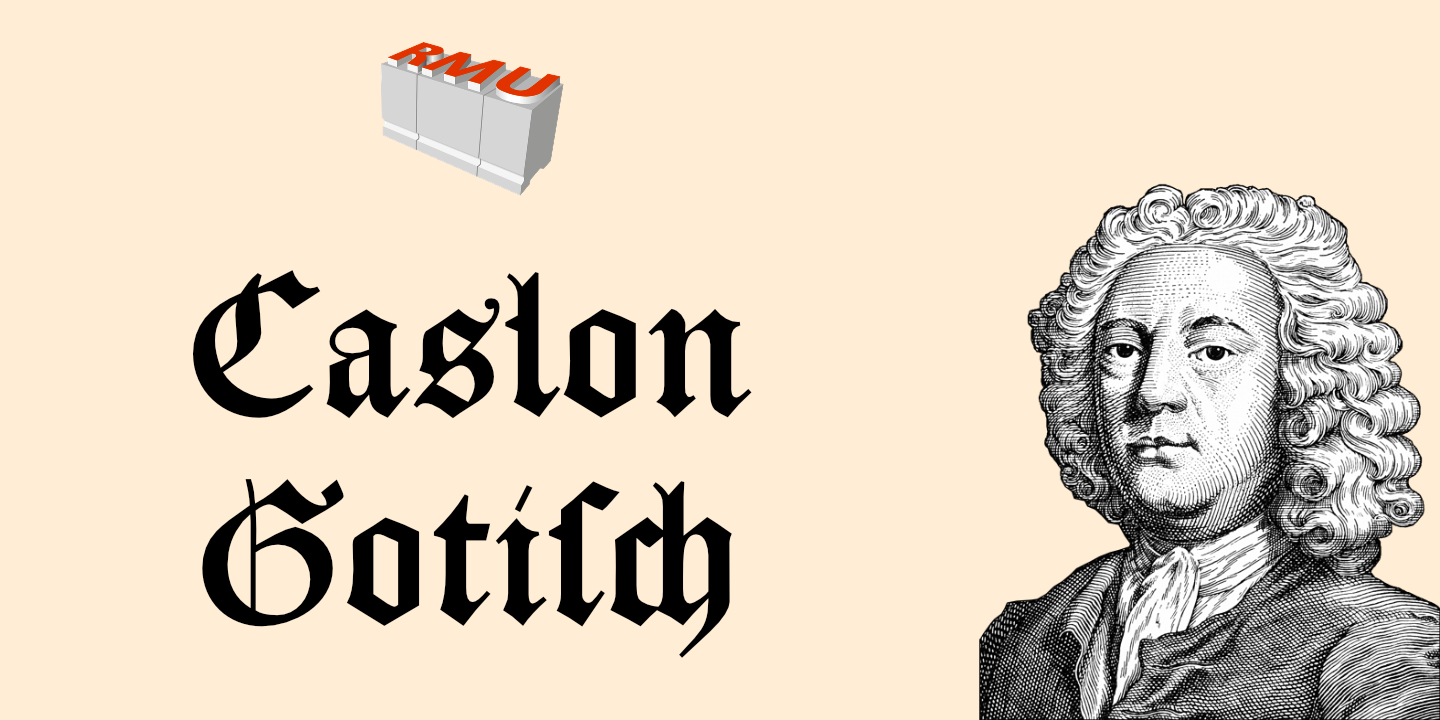
DS Caslon-Gotisch by Delbanco is based on a Caslon Gotisch by william Caslon, ca.Caslon Graphique EF (2001) was patterned after a 1725 Caslon face.Ralph Unger made Caslon Gotisch (2010) based on an example found in a 1763 specimen book.Recasting Caslon Old Face discusses Specimens of the original Caslon Old Face printing types, engraved in the early part of the 18th century by Caslon I (1896).Ī listing of some digital version/revivals of Caslon's types: A specimen of cast ornaments (1795) is by William Caslon III and Charles Whittingham (1767-1840).
#WILLIAM CASLON FONT FREE#
Caslon&Co., passed down through various members of the family until 1937, when the rights were transferred to Stephenson Blake.Ĭheck out the free scanned version of A Specimen of Printing Types (1785, Galabin and Baker, London) by William Caslon III. His son, William Caslon II, took over the business upon his death in 1766. His types were just as highly regarded in America, where the Declaration of Independence was set in Caslon. The English reliance on Dutch types had finally come to an end. That is, I think, their secret: a perfection of the whole, derived from harmonious but not necessarily perfect individual letterforms.Ĭaslon's fame stems largely from his specimen of 1734, showing types that were considered to be superior to the Dutch types that inspired them. His letters when analyzed, especially in the smaller sizes, are not perfect individually but in their mass their effect is agreeable. Dutch fonts were monotonous, but Caslon's fonts were not so. Updike: While he modelled his letters on Dutch types, they were much better for he introduced into his fonts a quality of interest, a variety of design, and a delicacy of modelling, which few Dutch types possessed. His major influences were the Dutch designers Christoffel van Dijck and Dirck Voskens. The first fonts cut by Caslon were for Arabic (1725), Hebrew (1726) and Coptic (1731), but the designs date back to 1722. His Caslon Roman Old Face was cut between 17. His William Caslon Foundry was established by him in 1719, and would operate in London for over 200 years. William Caslon I was born in Worcestershire in 1692. Though rational and mechanical, they are clear, easy to read, and elegant.TYPE DESIGN INFORMATION PAGE last updated on As seen in fonts like New Baskerville, John’s fonts are still a standard for typographic beauty. He was largely unsuccessful in England but enthusiastically received by European craftsmen. He used wide margins and well-leaded copy, beginning the style for quality that we still use today.īecause he was an amateur, the pros copied his work relentlessly.

He smoothed his papers by running them through heated copper cylinders, instituting what we now call calendaring. He used a brass plate and a hard impression when the fashion was a soft squeeze. He was an amateur printer and he made his press a hallmark of excellence. He liked Caslon’s work but wanted to improve on it. Outside of John’s very beautiful typeface, his major influence was on the general look of page layout and formatted typography. Franklin was extremely impressed with John Baskerville’s designs in England at the time. This was the time of the Revolution and design was into Retro classical, which was called Neoclassical by the historians.

Caslon’s types became popular throughout Europe and the American colonies printer Benjamin Franklin hardly used any other typeface. Because of their remarkable practicality, Caslon’s designs met with instant success.

Caslon’s types were based on seventeenth-century Dutch old style designs, which were then used extensively in England. MyFonts puts it this way: “ William Caslon released his first typefaces in 1722.


 0 kommentar(er)
0 kommentar(er)
